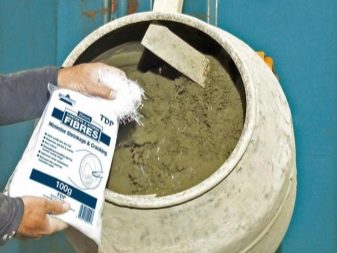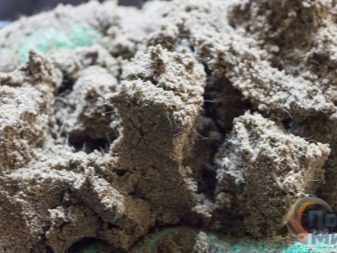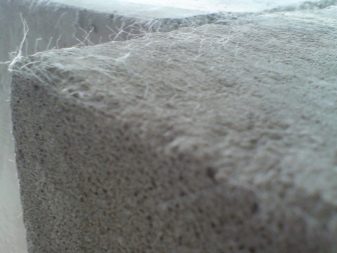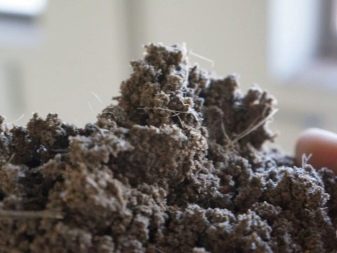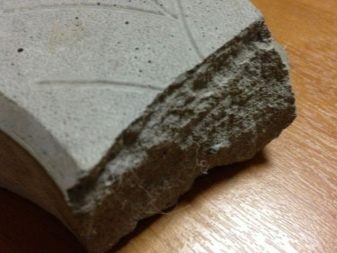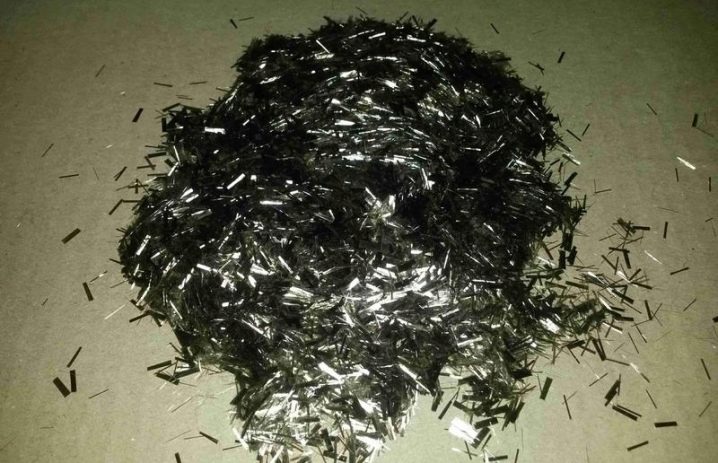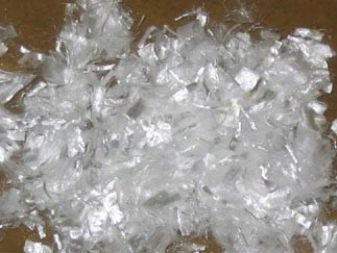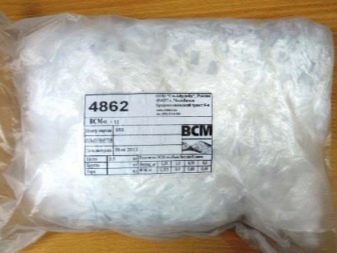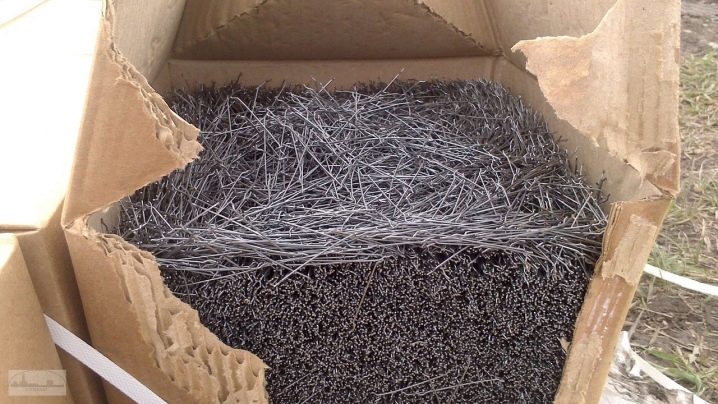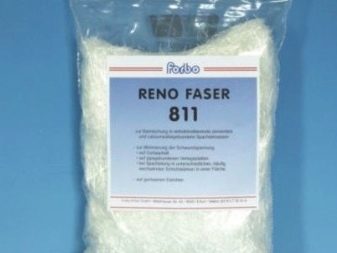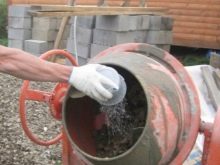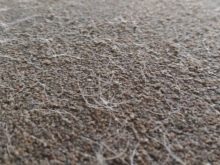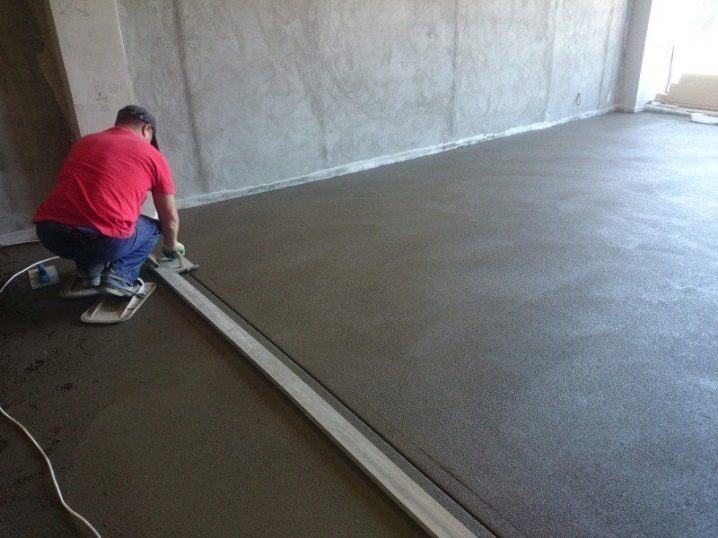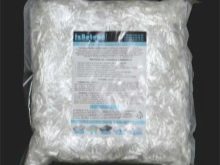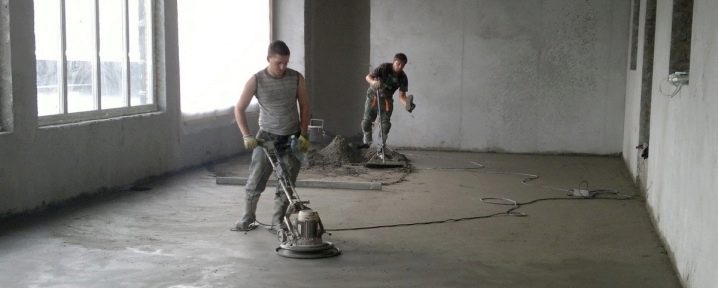Fiber for floor screed: the appointment and consumption
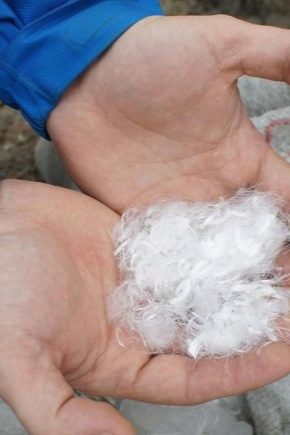
One of the stages of floor construction is the formation of leveling and reinforcing screeds. Concrete used in this case does not always have the necessary technical parameters or requires special care in the initial stages. To eliminate such defects, fiberglass is used for floor screed, the purpose and consumption of which depends on the purpose of the surface.
Features: pros and cons
Fiberglass is an artificial filler for cement mortars. Release it in the form of small flakes that are easy to mix with other components of the mixture.
Fiber based solutions have several significant advantages over classic products:
- Fiberglass screed has a high bending strength. The base of such materials perfectly tolerates the shrinkage of buildings, the swelling of soils and many other loads.
- Cements after solidification almost never stratified. This is achieved by the fibers, which are randomly arranged in the structure of the substance.
- Fiber does not allow cracking the coupler. But this effect is achieved only if the exact proportions recommended by the manufacturer are observed.
- Fiber-based cement mortar can be prepared using a small amount of water. This, in turn, accelerates the freezing of the mixture and does not allow micro-voids and other negative components to form inside the structure.
- Fiberglass is obtained from materials that do not rot and are not destroyed by external factors.
- After hardening, cement is not so easy to erase, which affects the service life of both bases and decorative materials.
- Adding fiber to the composition of concrete affects the quality of waterproofing material.The stiffened base badly passes and absorbs moisture.
- Fiber-based surfaces can withstand low freezing temperatures at which clean concrete is not recommended to be used.
As for the shortcomings, the fiber and products based on it practically do not have them.
But it should be noted that poor quality raw materials may emit harmful substances into the air after installation. Therefore, it is important when buying to check the quality characteristics of products, as well as its compliance with environmental standards.
Characteristic
Fiber is produced from various substances, which allows us to give it the necessary technical parameters.
This product is characterized by several original properties:
- Resistance to corrosion. Only metal fiber is subject to rapid deterioration by moisture. The fibers quickly begin to rust, but it all depends on how the material is laid.
- Cost The cheapest material is metal based products. Propylene analogs are in the average price range, which led to the popularity of the substance.
- Strength. Basalt fiber has an advantage here.It should be noted that it is able to preserve the integrity of the surface, even if the cement starts through cracks. Polypropylene has the lowest strength, the fibers of which withstand a load of 0.9-0.95 g / m.
- Fiber length This value may vary depending on the purpose of the fiber. On the market are yarns ranging in length from 6 to 20 mm. The smallest of them are used in facing solutions. When you need to build solid objects, use fibers of greater length.
- Weight of packing. This parameter is not limited today. For a small building you can find a package of 600 gr. If you need a large volume of products, then manufacturers produce fiber in bags weighing up to 10 kg. Almost all bulk packaging inside contain a multiple of the number of containers of 600 or 900 g, depending on the modification.
When buying fiber, you should definitely require a certificate of conformity. This ensures that no harmful substances affecting humans and the environment have been used in the production.
Purpose
Fiber is a universal building filler, which is used only as additives.
The main purpose of the fiber is to create durable concrete surfaces that can withstand certain types of loads. It is possible to apply substances with several types of cement mixes, including gas concrete, foam concrete and peskobeton.
In household construction fiberglass can be added to the screed in order to reinforce it. Some varieties are added to plaster. But technically, fiber does not work without a binder, which is cement.
Types of fiber
Fiberglass is produced artificially from various materials. Depending on this, this product can be divided into several types.
Basalt fiber
The main components are natural rocks of basalt, which pull and grind. This type of fiber is practically not damaged by external climatic factors.
The substance tolerates very low temperatures, also gives the coupler maximum bending strength. Therefore, basalt fibers are used in the construction of buildings located in seismically active zones.
Polypropylene fiber
The substance is more popular today, as a bit cheaper than basalt fillers. At the same time, polypropylene also binds concrete well, increasing the strength characteristics.
The versatility of this fiber is that it can be used not only when arranging screeds, but also as plaster with special solutions.
The service life of polypropylene is much less than that of basalt, but this does not prevent its use in modern construction.
Metal fibers
Release them in the form of small chips. The best option for their use is the construction of concrete structures with significant dimensions and weight.
Fiberglass
Experts recommend using this type of fiber in those places where you need to give the surface a significant plasticity.
Proportions
Concrete foundations today are very popular. In their construction, many experts recommend adding fiberglass for floor screed. This provides a solid and even surface.
Reinforced fiber cement screed is prepared quite simply and in several steps:
- First of all, we should prepare pure sand and cement.The best option would be the products of the brand M500, which has unique adhesive properties. After that, the components are thoroughly mixed until a homogeneous mass.
- Then fiber is introduced into the structure. The volume of the substance should be equal to half the volume of previously used products. In order to obtain high-quality products, fibers should be measured using the same containers with which cement and sand were poured.
- In this step, water is added. Its amount depends on the volume of sand and cement. The optimal ratio is 0.5 liters of liquid per 1 kg of solution.
- The procedure ends with a thorough mixing of the components. This leads to the formation of a strong fiber cement mixture.
When the solution is ready, perform the installation of basic reinforced screed. Fiber layer is applied in the same way as regular cement mortar. For alignment use beacons and laser level.
Consumption
Fiber is not the main component of concrete or concrete screed, but the presence of materials can drastically change the properties of a substance. This indicator is affected by fiber consumption.
Based on 1 m3 of the mixture, several weight proportions can be used:
- 300 g / m3.This amount of fiber only slightly changes the connection between the components of the solution. Apply quite rarely, since a radical change in technical parameters does not occur.
- 600 g / m3. This amount of product increases ductility and moisture resistance. Also, the service life of the surface increases several times.
- 800-1500 g / m. This consumption is the norm and allows you to achieve maximum strength, elasticity and abrasion resistance.
If you need to calculate the amount of fiber per 1 m2 of screed, then you need to proportionally take into account the thickness of the concrete.
For example, if the solution on this area is laid with a thickness of 50 mm, then the coefficient will be 0.05. That is, if you plan to add 800 g per 1 m3 of solution, then only 40 g are needed for this area. Here everything is calculated proportionally relative to the standard consumption per 1 m3.
Manufacturers
Fiberglass is a fairly popular building material that can be purchased almost everywhere. Today, several companies produce these products, among which are:
- Propex;
- Fibrin;
- "Fiberglass";
- "Fibrin";
- "Fiber wire VSM" and many others.
Products of these brands are of high quality and safety.
Before buying them, be sure to familiarize yourself with the technical parameters of the fibers in order to find the best option for solving specific problems.
Reviews
Concrete with the addition of fiber is perfect for domestic construction needs. According to customer reviews, this material makes it possible to exclude the use of reinforcement in screeds in some way. But at the same time, many note that the quality of products depends on the type of fibers used and the manufacturer.
Some use fiberglass to form screeds, while large enterprises build industrial floors that cannot be cracked.
Fiber fibers are a great opportunity to extend the life of the floor, minimizing the thickness of the concrete layer.
For information on how to screed the floor with the addition of fiberglass, see the following video


